Grow Delicious Cantaloupe Hacks: Who doesn’t dream of biting into a perfectly sweet, juicy cantaloupe, especially one you’ve nurtured from seed to fruit right in your own backyard? I know I do! But let’s be honest, growing cantaloupe can sometimes feel like a gamble. You pour your heart and soul into those little vines, only to end up with bland, disappointing melons.
For centuries, gardeners have been perfecting the art of melon cultivation. From ancient Egypt, where melons were prized for their sweetness, to the modern-day victory gardens, the quest for the perfect cantaloupe has been a constant. But you don’t need to be an expert to enjoy a bountiful harvest.
That’s where these grow delicious cantaloupe hacks come in! I’m sharing my tried-and-true secrets to help you overcome common challenges like powdery mildew, blossom end rot, and those pesky squash bugs. These aren’t just random tips; they’re practical, DIY solutions that will transform your cantaloupe growing game. Imagine the satisfaction of serving up homegrown cantaloupe to your family and friends, knowing you grew it yourself with a little help from these clever tricks. Let’s get started and turn your garden into a cantaloupe paradise!
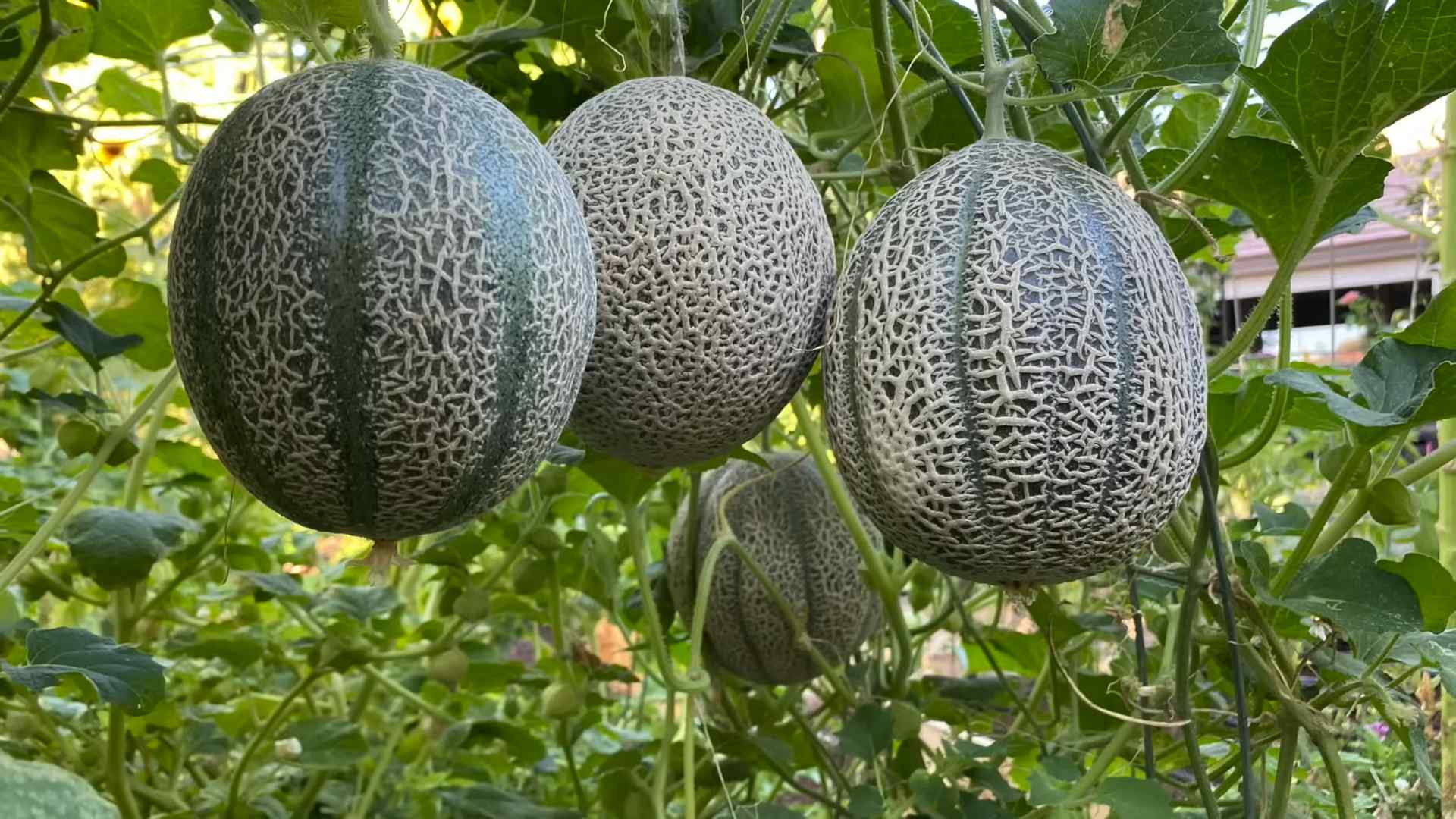
Grow Delicious Cantaloupe: From Seed to Sweetness!
Okay, fellow gardening enthusiasts! Let’s talk cantaloupe. That juicy, orange, melt-in-your-mouth goodness is totally achievable in your own backyard. I’m going to walk you through everything I’ve learned about growing these beauties, from choosing the right variety to harvesting that perfect, ripe melon. Get ready to impress your friends and family with your cantaloupe-growing prowess!
Choosing the Right Cantaloupe Variety
First things first, you need to pick a cantaloupe variety that suits your climate and growing space. Not all cantaloupes are created equal! Here’s a breakdown of some popular choices:
* ‘Athena’: This is a classic, reliable choice. It’s known for its disease resistance and consistent yields. Plus, the melons are a good size, perfect for sharing (or not!).
* ‘Hales Best Jumbo’: An heirloom variety with a distinctive netted rind and sweet, aromatic flesh. It’s a bit more finicky than ‘Athena,’ but the flavor is worth the extra effort.
* ‘Ambrosia’: If you’re looking for super-sweet, this is your melon. ‘Ambrosia’ is known for its high sugar content and smooth texture.
* ‘Minnesota Midget’: Short on space? This variety is perfect for smaller gardens or even containers. The melons are smaller, but they pack a flavorful punch.
* ‘Sugar Cube’: Another compact variety, ‘Sugar Cube’ is early-maturing and produces small, round melons that are incredibly sweet.
Consider your growing season length when choosing a variety. Some cantaloupes need a longer, warmer season to mature properly. Check the seed packet or plant label for specific information.
Getting Started: Planting Your Cantaloupe
Now that you’ve chosen your variety, let’s get those seeds in the ground (or started indoors!). Cantaloupes are warm-weather lovers, so timing is key.
* Starting Seeds Indoors (Recommended): Starting seeds indoors gives you a head start, especially if you have a shorter growing season.
* When to Start: About 3-4 weeks before the last expected frost.
* What You’ll Need: Seed starting trays or small pots, seed starting mix, a heat mat (optional but helpful), and a grow light (also optional, but highly recommended).
* How to Do It:
1. Fill your seed starting trays or pots with seed starting mix.
2. Moisten the mix thoroughly.
3. Plant 2-3 seeds per cell or pot, about ½ inch deep.
4. Gently cover the seeds with soil.
5. Place the trays or pots on a heat mat (if using) and under a grow light (if using).
6. Keep the soil consistently moist, but not soggy.
7. Once the seedlings emerge (usually within a week), thin them to one strong seedling per cell or pot.
* Direct Sowing (If You Have a Long, Warm Season): If you live in a warm climate with a long growing season, you can direct sow cantaloupe seeds directly into the garden.
* When to Sow: After the last frost, when the soil has warmed to at least 60°F (15°C).
* Where to Sow: Choose a sunny spot with well-drained soil.
* How to Sow:
1. Prepare the soil by amending it with compost or well-rotted manure.
2. Sow seeds in hills or rows, spacing them according to the seed packet instructions.
3. Plant seeds about ½ inch deep.
4. Gently cover the seeds with soil.
5. Water thoroughly.
Preparing the Garden Bed
Cantaloupes are heavy feeders, so preparing the garden bed is crucial for a bountiful harvest.
* Sunlight: Cantaloupes need at least 6-8 hours of direct sunlight per day. Choose a location that gets plenty of sun.
* Soil: Cantaloupes prefer well-drained, sandy loam soil with a pH of 6.0-6.8.
* Amendments: Amend the soil with plenty of compost or well-rotted manure. This will improve drainage, fertility, and water retention. I usually add a generous amount – think several inches worked into the top foot of soil.
* Spacing: Give your cantaloupe plants plenty of room to spread. Space plants 2-3 feet apart in rows that are 4-6 feet apart. This allows for good air circulation, which helps prevent disease.
* Raised Beds (Optional): Growing cantaloupes in raised beds can improve drainage and soil temperature, especially in cooler climates.
Transplanting Your Seedlings
If you started your seeds indoors, it’s time to transplant them to the garden!
1. Harden Off Seedlings: Before transplanting, you need to “harden off” your seedlings. This means gradually exposing them to outdoor conditions over a period of 7-10 days. Start by placing them in a sheltered spot outdoors for a few hours each day, gradually increasing the amount of time they spend outside.
2. Choose a Cloudy Day: Transplant on a cloudy day or in the late afternoon to minimize stress on the seedlings.
3. Dig Holes: Dig holes that are slightly larger than the root balls of your seedlings.
4. Gently Remove Seedlings: Gently remove the seedlings from their containers, being careful not to damage the roots.
5. Plant Seedlings: Place the seedlings in the holes and backfill with soil.
6. Water Thoroughly: Water the seedlings thoroughly after transplanting.
7. Mulch: Apply a layer of mulch around the plants to help retain moisture, suppress weeds, and regulate soil temperature. I like to use straw or shredded leaves.
Caring for Your Cantaloupe Plants
Once your cantaloupe plants are in the ground, it’s time to provide them with the care they need to thrive.
* Watering: Cantaloupes need consistent watering, especially during hot, dry weather. Water deeply and regularly, aiming for about 1-2 inches of water per week. Avoid overhead watering, as this can promote fungal diseases. Drip irrigation is ideal.
* Fertilizing: Cantaloupes are heavy feeders, so fertilize them regularly. Use a balanced fertilizer (e.g., 10-10-10) every 2-3 weeks. You can also side-dress with compost or well-rotted manure.
* Weeding: Keep the garden bed free of weeds, as they can compete with your cantaloupe plants for nutrients and water.
* Pest Control: Keep an eye out for common cantaloupe pests, such as aphids, squash bugs, and cucumber beetles. Use organic pest control methods, such as insecticidal soap or neem oil, to control these pests.
* Disease Prevention: Cantaloupes are susceptible to fungal diseases, such as powdery mildew and downy mildew. To prevent these diseases, provide good air circulation, avoid overhead watering, and apply a fungicide if necessary.
* Pruning (Optional): Some gardeners prune their cantaloupe plants to encourage larger fruit. If you choose to prune, remove any suckers (shoots that grow from the base of the plant) and any leaves that are touching the ground.
Supporting Your Cantaloupe Vines
As your cantaloupe vines grow, they may need some support to keep the fruit off the ground. This is especially important for larger varieties.
* Trellising: Trellising cantaloupe vines can improve air circulation, reduce disease, and make harvesting easier. Use a sturdy trellis that can support the weight of the melons.
* Slings: If you’re growing cantaloupes on the ground, you can use slings to support the fruit. Make slings out of old pantyhose, netting, or fabric. Tie the slings to the trellis or stakes to keep the melons off the ground.
Harvesting Your Cantaloupe
The moment we’ve all been waiting for! Knowing when to harvest your cantaloupe is key to enjoying that perfect, sweet flavor.
* Days to Maturity: Check the seed packet or plant label for the days to maturity. This will give you a general idea of when to expect your cantaloupes to be ripe.
* Visual Cues: Look for these visual cues to determine if your cantaloupe is ripe:
* Color Change: The rind will change color from green to tan or yellow.
* Netted Rind: The netting on the rind will become more pronounced and raised.
* Stem Separation: The stem will begin to separate from the fruit. This is called “sli
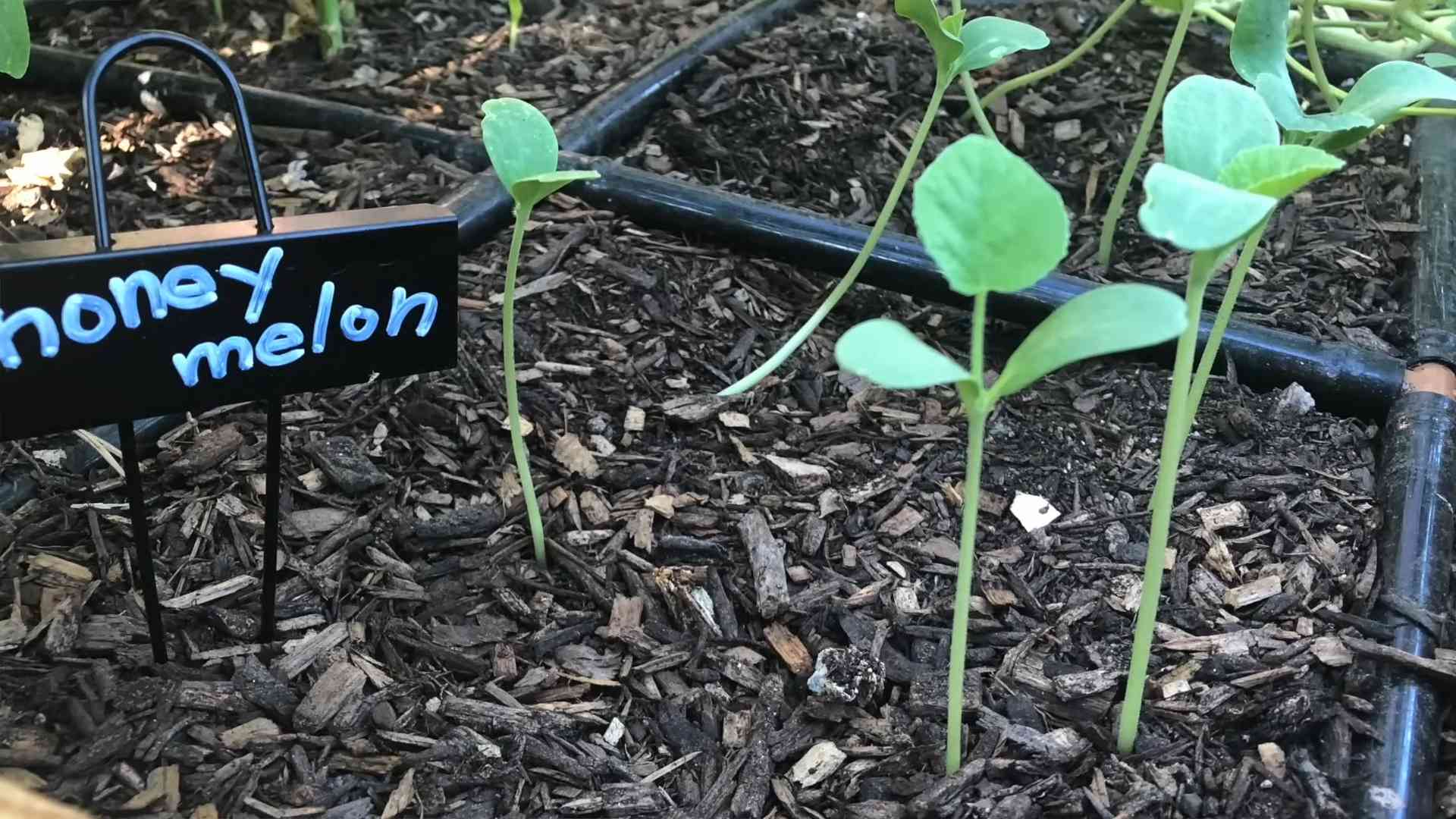
Conclusion
So, there you have it! Mastering the art of growing delicious cantaloupe doesn’t require a green thumb blessed by the gardening gods. With these simple yet effective hacks, you’re well on your way to harvesting sweet, juicy cantaloupes right from your own backyard. We’ve covered everything from seed starting and soil preparation to pollination assistance and pest control, all designed to maximize your yield and minimize the headaches.
Why is this DIY approach a must-try? Because it empowers you to take control of your food source, ensuring you’re enjoying cantaloupes free from harmful chemicals and bursting with flavor. Store-bought cantaloupes simply can’t compare to the taste of a vine-ripened melon nurtured with your own care. Plus, it’s incredibly rewarding to watch your hard work blossom into something so delicious.
But don’t stop there! Experiment with different cantaloupe varieties to discover your personal favorite. Try growing ‘Athena’ for its disease resistance, or ‘Hales Best Jumbo’ for its classic cantaloupe flavor. Consider companion planting with herbs like basil or marigolds to deter pests naturally. You can also explore vertical gardening techniques to save space and improve air circulation around your cantaloupe vines. For those in cooler climates, consider using row covers or cold frames to extend the growing season.
The key to success lies in consistent observation and adaptation. Pay close attention to your plants, monitor the weather, and adjust your approach as needed. Don’t be afraid to experiment and learn from your mistakes. Gardening is a journey, not a destination, and every season brings new opportunities for growth.
We are confident that these **grow delicious cantaloupe** hacks will transform your gardening experience. Now, it’s your turn to put these tips into action! Get your hands dirty, embrace the challenge, and prepare to be amazed by the fruits (or rather, melons) of your labor.
We can’t wait to hear about your cantaloupe-growing adventures! Share your experiences, successes, and even your struggles in the comments below. Let’s build a community of cantaloupe enthusiasts, sharing knowledge and inspiring each other to grow the best cantaloupes possible. Happy gardening!
Frequently Asked Questions (FAQ)
1. What is the best time to start cantaloupe seeds?
The ideal time to start cantaloupe seeds depends on your local climate and growing season. Generally, you should start seeds indoors about 3-4 weeks before the last expected frost. This allows the seedlings to develop a strong root system before being transplanted outdoors. If you live in a warmer climate with a longer growing season, you can direct sow seeds directly into the garden soil after the danger of frost has passed. Check your local frost dates and adjust accordingly.
2. What type of soil is best for growing cantaloupes?
Cantaloupes thrive in well-drained, fertile soil that is rich in organic matter. The soil pH should be between 6.0 and 6.8. Before planting, amend your soil with compost, aged manure, or other organic materials to improve drainage and fertility. Avoid heavy clay soils, as they can retain too much moisture and lead to root rot. If you have clay soil, consider growing cantaloupes in raised beds or containers.
3. How much sunlight do cantaloupes need?
Cantaloupes require at least 6-8 hours of direct sunlight per day to produce sweet, flavorful fruit. Choose a planting location that receives full sun throughout the day. If you live in a particularly hot climate, some afternoon shade may be beneficial to prevent the plants from overheating.
4. How often should I water my cantaloupe plants?
Cantaloupe plants need consistent moisture, especially during fruit development. Water deeply and regularly, aiming to keep the soil consistently moist but not waterlogged. Avoid overhead watering, as this can increase the risk of fungal diseases. Instead, water at the base of the plants or use a soaker hose. As the fruits ripen, you can reduce watering slightly to concentrate the sugars and enhance the flavor.
5. How do I know when my cantaloupe is ripe?
Determining when a cantaloupe is ripe can be tricky, but there are a few key indicators to look for. First, the stem should easily slip from the vine with a gentle tug. This is known as the “full slip” stage. Second, the skin color should change from green to a tan or yellowish hue. Third, the cantaloupe should have a sweet, fragrant aroma. Finally, the blossom end (opposite the stem) should be slightly soft to the touch.
6. What are some common pests and diseases that affect cantaloupes?
Cantaloupes are susceptible to several pests and diseases, including aphids, squash bugs, cucumber beetles, powdery mildew, and fusarium wilt. To prevent pest and disease problems, practice good garden hygiene, such as removing plant debris and weeds. Use insecticidal soap or neem oil to control aphids and other pests. Choose disease-resistant cantaloupe varieties and provide good air circulation to prevent fungal diseases. Crop rotation can also help to reduce the buildup of soilborne pathogens.
7. How can I improve pollination for my cantaloupe plants?
Cantaloupes rely on bees and other pollinators to transfer pollen from male to female flowers. If you notice a lack of bee activity in your garden, you can hand-pollinate the flowers yourself. Use a small paintbrush to collect pollen from the male flowers (which have a long, thin stem) and transfer it to the female flowers (which have a small fruit developing at the base). You can also attract more pollinators to your garden by planting flowers that are rich in nectar and pollen, such as sunflowers, zinnias, and lavender.
8. Can I grow cantaloupes in containers?
Yes, you can successfully grow cantaloupes in containers, but you’ll need to choose a large container (at least 20 gallons) and provide adequate support for the vines. Use a well-draining potting mix and fertilize regularly with a balanced fertilizer. Container-grown cantaloupes may require more frequent watering than those grown in the ground. Choose a compact or bush-type cantaloupe variety for best results.
9. How do I store cantaloupes after harvesting?
Once harvested, cantaloupes can be stored at room temperature for a few days. To extend their shelf life, store them in the refrigerator. Whole cantaloupes can be stored in the refrigerator for up to a week. Cut cantaloupe should be stored in an airtight container in the refrigerator and consumed within a few days.
10. What are some creative ways to use my homegrown cantaloupes?
Beyond simply enjoying them fresh, there are countless ways to use your homegrown cantaloupes. Blend them into smoothies, make cantaloupe sorbet or ice cream, grill them for a smoky flavor, or add them to salads. You can also use cantaloupe to make jams, chutneys, or even cantaloupe-infused water. Get creative and experiment with different recipes to discover your favorite ways to enjoy this delicious fruit.

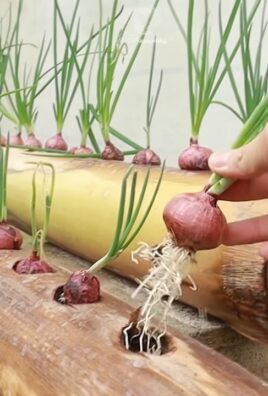
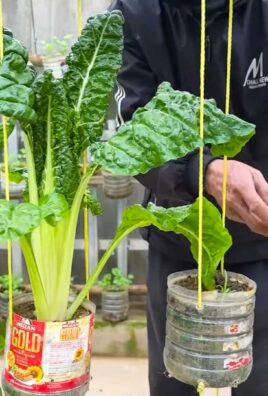
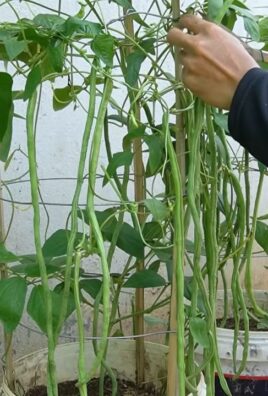
Leave a Comment